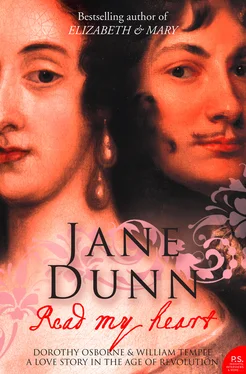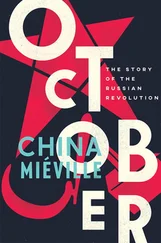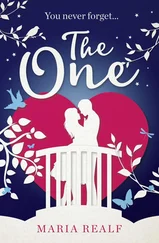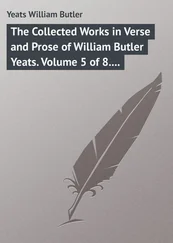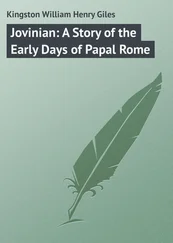The face he had gazed on he described thus: ‘her eyes black as the night seem’d to presage the fate of all such as beheld them. Her browne haire curl’d in rings, but indeed they were chaines that enslav’d all hearts that were so bold as to approach them.’ 32 There is no doubt that he was pointedly describing Dorothy, from whom he was exiled at the time. During the six and a half years of their separation she was indeed circled by suitors bold enough to approach her. She was pressed by her father, and then more threateningly by her brother, to accept anyone with a suitable fortune, but she withstood the emotional blackmail, deprecating each suitor to William with a sharp wit and dispatching them all with unsentimental glee. But her position was parlous. For most of their courtship, Dorothy was secluded in her family’s country house, not knowing whether William would remain loyal or that either of them could continue to resist the family pressure on them to conform. At times their spirits and hope failed them. Illness, depression and threats of death made their ugly interjections. There could never be any certainty until their struggle had run its course.
Somehow, through personal tragedy, family blackmail, enforced separation, misunderstandings, ridicule and despair, Dorothy and William clung against all the odds to a sometimes faltering faith in each other and in the triumph of romantic love. For a young couple to maintain their fidelity to an ideal of a self-determined life, no matter what outrage, arguments and threats were marshalled against them, merely compounded in the eyes of the world their disrespect and folly. For Dorothy Osborne and William Temple to remain constant to each other and overcome every obstacle, from when they first met in 1648 through to their eventual, longed-for consummation at Christmas 1654, was remarkable indeed. Dorothy wrote to him in the midst of their trials: ‘can there bee a more Romance Story than ours would make if the conclusion should prove happy[?]’ 33 but it seemed the vainest hope.
*Lady Halkett (1623–99) was born Anne Murray, her father a tutor to Charles I and then provost of Eton College. He died when she was a baby and her remarkable mother became governess to the royal children. Anne was a highly intelligent and spirited young woman and after a wild and adventurous life as the assistant to a secret agent employed by Charles I she eventually married a widower, Sir James Halkett, at the late age of thirty-three. After the death of her husband she became a teacher herself.
*Robert Hammond (1621–54), a distinguished parliamentarian soldier and friend of Cromwell, nephew of the royalist divine Dr Henry Hammond, chaplain to the king, and cousin to William Temple. Sent by Cromwell to Ireland as a member of the Irish council responsible for reorganising the judiciary, he caught a fever and died at the age of thirty-three.
†Archduke Leopold Wilhelm of Austria (1614–62), governor of the Spanish Netherlands and art collector. His collection is now part of the Kunsthistorisches Museum in Vienna.
*Ovid’s Metamorphoses , viii, 620–724. Philemon’s name connoted love and that of his wife Baucis modesty. Dorothy had identified closely with the old couple who had been wedded in their youth and lived in contented poverty, growing older and ever closer. For their simple kindness and hospitality to the gods Jupiter and Mercury, who were travelling incognito and had been denied succour at every other door, they were rewarded with a temple in place of their cottage and transformed into priests and granted their only request: that having lived so long together in close companionship they might be allowed to die together. As death approached, they both transmuted into trees, Philemon an oak and Baucis a linden tree, their trunks and branches so closely intertwined they were as one. Dorothy’s own signed copy of the 1626 edition of Sandys’s translation of Ovid is now in the Osborn collection in the Beinecke Library at Yale.
*They both used the word ‘friend’ to mean also a close family member, most notably a spouse.
*William Temple adapted his series of romances from François de Rosset’s Histoires Tragiques , a collection of nineteen versions of true stories that were collected and published in 1615 with many further editions. William’s additions and departures from the original were expressive of his more sympathetic nature and philosophical mind, as well as outlets for frustrated feeling. Most significantly, however, they were personal messages to the woman for whom he was writing.
CHAPTER TWO
The Making of Dorothy
I felt this is the heart of England … history I felt; Cromwell; The Osbornes; Dorothy’s shepherdesses singing … the unconscious breathing of England
VIRGINIA WOOLF, watching a country wedding, Diary,
22 September 1928
DOROTHY’S DETERMINATION TO direct her own fate and modify her central role as dutiful daughter and marriage pawn was highly unusual for the time. The kind of family she was born into, and the possible influences and mythologies that were brought to bear on her while growing up a well-bred Stuart girl, contributed to her unique insistence on self-determination. The Osborne family for centuries had been part of the lifeblood of rural and administrative England. Dorothy Osborne was born in 1627, two years after Charles I had come to the throne. Her most recent ancestors on her father’s side were landed gentry and faithful officers of the crown, who, from the fifteenth century, were settled as landowners in Essex. But it was the women they married who brought a certain intellectual strength and unorthodox cast of mind to the genetic mix she inherited. Perhaps there was an extra helping of independence of mind in these women that could be expressed more openly by Dorothy, freed by the revolutionary chaos of the time.
Her great-grandfather Peter Osborne was born in 1521, when Henry VIII was in his prime, and subsequently became keeper of the privy purse to Henry’s son, Edward VI. He and his heirs were granted the hereditary office of treasurer’s remembrancer * in the exchequer. He married Anne Blythe, the daughter of the first regius professor of physick at the University of Cambridge and niece of Sir John Cheke, the celebrated Greek scholar, regius professor of Greek and tutor to Edward VI. † This venerable man died in Sir Peter’s house, shamed at having publicly recanted his Protestantism under Mary I. The intellectual Cheke descendants were important to Dorothy and were mentioned often in her letters where she referred to them as ‘cousins’, making a particular point of their kinship.
Peter and Anne’s son was Dorothy’s grandfather Sir John Osborne, born in 1552. He married Dorothy Barlee, ten years his junior and lady-in-waiting to Anne of Denmark, consort to James I. She was the heiress and granddaughter of the fearsome Richard Lord Rich, a brilliant, ruthlessly opportunistic lawyer who betrayed Sir Thomas More during Henry VIII’s reign and under Mary I was a zealous burner of heretics. Sir John Osborne inherited the office of treasurer’s remembrancer on his father’s death in 1592. It was he who acquired Chicksands Priory in Bedfordshire, which remained the country seat of this branch of the family right into the twentieth century.
Sir John and Lady Osborne’s eldest son, another Sir Peter Osborne, was our Dorothy’s father. Born in 1585, the first of five sons, he went to Emmanuel College, Oxford, when he was eighteen. Dorothy’s uncle Francis, the youngest of her father’s brothers, was the only writer in her immediate family, publishing his hugely popular Advice to a Son in 1656. Although he was not a published writer himself, Sir Peter’s letters are remarkable for their candour and expressiveness, a family characteristic that his daughter in her own writing was to transform into art. The brothers grew up at Chicksands where their father had installed in the neighbouring rectory at Hawnes the radical Puritan preacher and writer, Thomas Brightman, * whose influential preaching and writings were full of the sense of an imminent fulfilment of the apocalyptic prophesies of the Book of Revelations. Scholarly and saintly in appearance, he was passionately opposed to the established church and believed the Pope was the anti-Christ whose destruction was foretold by God.
Читать дальше
